Unlocking the Future: How Power Energy Innovations are Shaping Our Sustainable World
In today's rapidly evolving world, the pressing need for sustainable solutions has brought "power energy" innovations to the forefront of global discourse. As we confront the challenges of climate change, resource depletion, and energy security, the development of advanced technologies in power energy is not just beneficial; it is essential for a sustainable future. These innovations are transforming the way we produce, distribute, and consume energy, making it cleaner and more efficient than ever before.

From solar and wind energy advancements to the integration of smart grids and energy storage systems, the landscape of power energy is undergoing a revolution. These technologies not only aim to reduce carbon emissions but also seek to enhance energy accessibility and affordability across various demographics. In this context, understanding the various types of power energy innovations and their implications for society is crucial. This exploration sheds light on how these groundbreaking advancements are shaping our sustainable world, ensuring that future generations inherit a planet that is not only livable but thrives on renewable resources. Ultimately, it is through the lens of power energy that we may unlock a more sustainable and resilient future for all.
Innovative Energy Storage Solutions Revolutionizing Power Access
Innovative energy storage solutions are set to revolutionize power access and transition us toward a more sustainable future. One promising development is the incorporation of electric water heaters with solar photovoltaic (PV) systems for thermal energy storage. Research indicates that this integration can significantly reduce household reliance on the grid, making energy consumption more efficient and sustainable. By harnessing the sun’s energy, homes can be equipped to store thermal energy for later use, potentially lowering carbon footprints and energy costs.
Additionally, advancements in battery technology are driving significant changes in energy storage capabilities. Reports suggest that the market for battery storage solutions is expected to expand rapidly, particularly in sectors like data centers, which demand high reliability and efficiency. The intersection of artificial intelligence and battery technology has emerged as a key driver in this transformation. AI is being utilized to accelerate battery research, enhancing materials and designs for faster charging and longer cycle life, thus making renewable energy sources more viable for widespread adoption. With these innovations, the future of energy storage appears not only promising but essential for powering our sustainable world.

Smart Grid Technologies Enhancing Energy Efficiency and Management
The global IoT energy management market is on the brink of significant expansion, projected to surge from $70.58 billion in 2023 to an astounding $222.56 billion by 2030, boasting a compound annual growth rate (CAGR) of 17.8%. This growth highlights the increasing importance of integrating smart grid technologies into our energy systems. These technologies are not only enhancing energy efficiency but also enabling better management of resources, making it possible to harness data for more informed decision-making.
Moreover, advancements such as Vehicle-to-Home (V2H) power systems are expected to flourish, with the market anticipated to grow from $9.358 million in 2024 to $532.59 million by 2032, marking a remarkable CAGR of 24.28%. Such innovations illustrate the transformative potential of smart grid technologies in reducing energy consumption and optimizing energy distribution. As countries like Cambodia seek partnerships with leading energy tech companies to advance green energy solutions, it becomes increasingly clear that the evolution of energy management is pivotal for a sustainable future.
Unlocking the Future: How Power Energy Innovations are Shaping Our Sustainable World
| Innovation Type | Description | Benefits | Implementation Cost | Estimated Savings |
|---|---|---|---|---|
| Smart Meters | Devices that provide real-time data on energy consumption. | Improved energy management, enhanced billing accuracy. | $100 - $300 per unit | Up to 15% reduction in energy bills. |
| Demand Response Systems | Programs that reduce energy usage during peak hours. | Balances load, utilizes renewable energy efficiently. | $10,000 - $50,000 | Up to 20% savings during peak periods. |
| Energy Storage Systems | Battery systems to store excess energy for later use. | Increased reliability, grid stability. | $300 - $700 per kWh | Long-term savings through deferred energy costs. |
| Smart Grid Technologies | Advanced systems integrating IT with electric grid management. | Enhanced efficiency, improved outage response times. | Varies widely based on scale. | Savings vary; can exceed 20% in operational costs. |
The Role of Renewable Energy Sources in Sustainable Development
Renewable energy sources play a pivotal role in sustainable development, addressing the dual challenges of climate change and resource depletion. Solar, wind, hydro, and geothermal energies offer cleaner alternatives to fossil fuels, contributing to significant reductions in greenhouse gas emissions. By harnessing these abundant resources, nations can mitigate their carbon footprints while promoting energy independence. This transition not only focuses on energy generation but also fosters job creation in emerging sectors, ultimately invigorating local economies and enhancing community resilience.
Moreover, renewable energy technologies are increasingly becoming more accessible and affordable. Innovations in energy storage and grid management are enabling more efficient integration of these sources into existing infrastructure, ensuring a reliable supply of energy. As countries prioritize sustainability in their developmental agendas, investments in renewable energy projects are not only elevating global energy security but also supporting efforts in poverty alleviation and social equity. By prioritizing renewable energy, we can create a more balanced and sustainable future that benefits both people and the planet.
Next-Generation Nuclear Power: Safety and Sustainability Combined
Next-generation nuclear power is emerging as a pivotal player in the quest for a sustainable future. With advancements in technology, modern reactors are designed to prioritize safety without compromising efficiency. Innovations such as small modular reactors (SMRs) and high-temperature gas-cooled reactors (HTGRs) offer enhanced safety features, including passive cooling systems that automatically shut down in emergencies, drastically reducing the risk of accidents. These designs not only mitigate the fears surrounding nuclear energy but also promise a reliable and steady supply of low-carbon electricity.
Moreover, the sustainability of next-generation nuclear power goes beyond its safety measures. By utilizing advanced fuel cycles and recycling technologies, these reactors significantly reduce nuclear waste and improve resource efficiency. The incorporation of innovative materials and construction techniques further minimizes environmental impact, making nuclear energy a formidable alternative to fossil fuels. As the world moves toward decarbonization, next-generation nuclear power stands out as a necessary component of our clean energy mix, capable of providing the consistent power needed to support growing populations while protecting the planet's future.
Future Innovations in Nuclear Power
Disruptive Technologies Driving Carbon Reduction in Energy Sector
The energy sector is undergoing a transformative shift driven by disruptive technologies that aim to significantly reduce carbon emissions. According to the International Energy Agency’s 2021 report, achieving net-zero emissions by 2050 could mitigate the worst effects of climate change, with the energy sector playing a pivotal role. Central to this transition are innovations such as carbon capture, utilization, and storage (CCUS), which are essential in addressing the emissions still produced by fossil fuels. The recent commitment of over $4.5 million in funding for carbon capture technology highlights the growing recognition of its importance in facilitating the decarbonization of numerous industrial processes.
Moreover, advancements in renewable energy technologies and the electrification of industries are crucial steps toward the realization of sustainable energy goals. A recent analysis emphasizes that achieving the objectives set by the Clean Power 2030 Action Plan requires targeted carbon dioxide removal measures to manage the transition of the electricity sector effectively. As the world witnesses a disconnection between greenhouse gas emissions and GDP growth, the integration of artificial intelligence and low-carbon technologies within industries promises to revolutionize manufacturing processes, ultimately enabling a sustainable future that aligns with global carbon reduction targets.

Related Posts
-
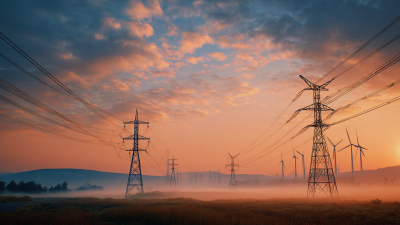
Harnessing Power Energy for a Sustainable Future The Role of Renewable Sources in Global Energy Consumption
-

Harnessing Smart Grid Energy Innovations at the 2025 China Import and Export Fair
-
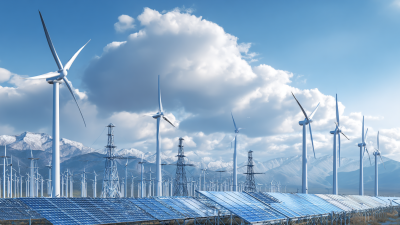
Exploring Sustainable Energy Innovations at 2025 China 138th Canton Fair
-
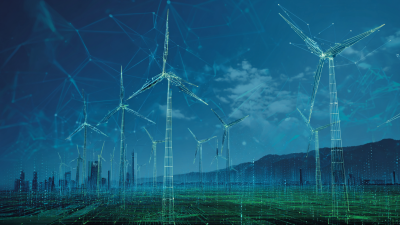
What is Energy Solutions and How They Impact Global Sustainability Efforts
-
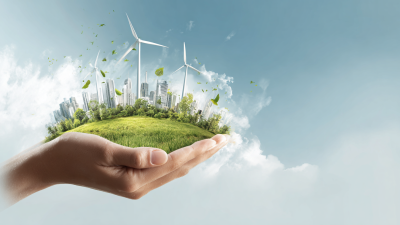
Harnessing Environmental Energy for a Sustainable Future Exploring Innovative Solutions and Global Impact
-
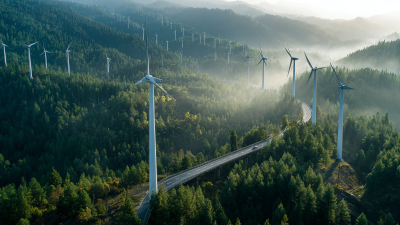
Innovative Energy Solutions: Transforming Sustainability for a Greener Future

